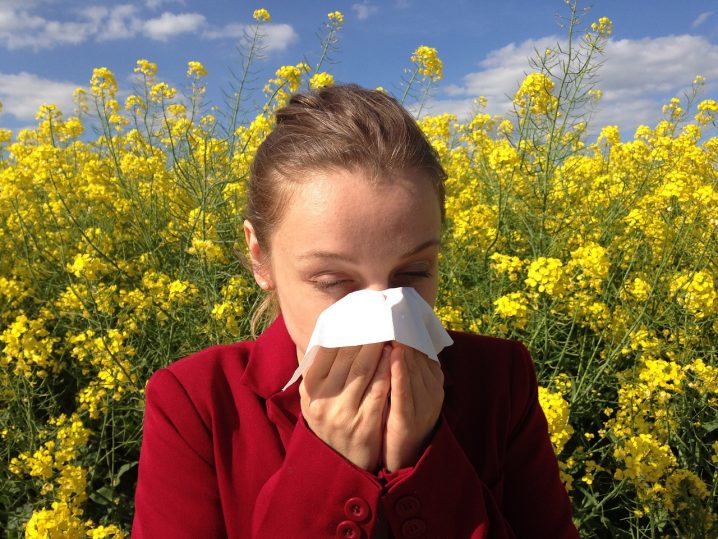When you suffer from allergies, you’re the first to know when Spring has officially arrived. It usually starts with a runny nose or a few sneezes. Before you know it, your nose is itchy and dry and you’re going through tissues like crazy.

You’ve probably tried the usual remedies like over the counter medications, but here are some ways to relieve allergies you may not know about:
- Take a tincture with goldenseal and echinacea
Sublingual tinctures containing goldenseal and echinacea do wonders to relieve seasonal allergies.
Goldenseal is a natural way to alleviate allergy symptoms. Echinacea supports the immune system, and together they’re a powerhouse.
- Improve your indoor air quality
Your house probably collects more dust and pollen than you realize. You can combat these common allergy triggers by improving the quality of air in your home. In addition to regular vacuuming and washing your bedding, Around the Clock recommends changing your HVAC system’s air filters every eight weeks and cleaning out your air ducts. If you have pets, you’ll need to change your air filters more frequently.
If you don’t clean your air ducts and change your filters, you’ll end up recirculating dirt, dust, and microbes throughout your home.
If you’ve never changed your air filters, you’re not alone. Plenty of people don’t realize their HVAC system has filters that require maintenance. If you clean your system and your air quality doesn’t seem to improve, you could be due to upgrade your HVAC system.
- Identify your allergies
Just because your allergies pop up every season doesn’t mean you can’t control your triggers. Imagine finding out you’re only allergic to one or two types of pollen. Now, imagine realizing those two types of pollen originate in your back yard. If that’s the case, you can hire a landscaper to dig up the plants you’re allergic to, and replant something else.
Take Scotch broom for example. It’s a foul-smelling weed that grows quickly, and is known to aggravate allergies. However, Scotch broom pollen is heavy and unlikely to be carried long distances. If you’ve got Scotch broom in your yard, digging it up will provide extensive relief.
The not-so-obvious source of allergies is often grass. There are numerous types of grass, and if you’re allergic to the grass surrounding your home, dig it up and plant a type of grass you’re not allergic to.
- Use a neti pot
A neti pot looks like a miniature teapot and is used to cleanse the nasal passages.
With warm distilled or filtered water, dissolve a small amount of pure saline solution in the pot and pour the water through your nasal passages. If you’ve never seen anyone use a neti pot, here’s a video demonstration of the process.
Performing a nasal cleanse reduces swelling of the nasal passages and alleviates symptoms from allergies and sinus infections.
Always use purified or distilled water in a neti pot
Using a neti pot is perfectly safe provided you use purified water and not tap water. Using tap water can expose you to harmful bacteria. You can use filtered water in a neti pot, but distilled water is best since it doesn’t contain any impurities.
If you don’t want to use a neti pot, there are plenty of nasal sprays on the market designed to accomplish the same thing. However, you’ll get more relief from using a neti pot than a spray.
- Rake your carpet
Raking your carpet is exactly what it sounds like. A carpet rake is usually made of soft rubber or nylon bristles that dig deeply into the carpet to pull up dust, hair, and dirt even the best vacuum can’t reach.
Check out these top 5 carpet rakes and watch the video demonstrations to see how they work. Not all rakes are built alike. Some are easy to use, while others require serious elbow grease. Some rakes will make your carpet look fresh, but don’t pick up pet hair.
As a general suggestion, nylon bristles are better for making a carpet look fresh, while rubber bristles are better at picking up pet hair embedded in the carpet.
- Place freestanding air filters where dust is abundant
If you’ve got exceptionally dusty areas in your home where a small draft might swirl the dust around, place air filters in those locations to catch it before it circulates throughout your home.
You don’t have to suffer in Spring!
Spring is a time to watch nature awaken from the dream of winter, not a time to suffer. Follow these tips to relieve your allergy symptoms and enjoy the beauty of Spring.



